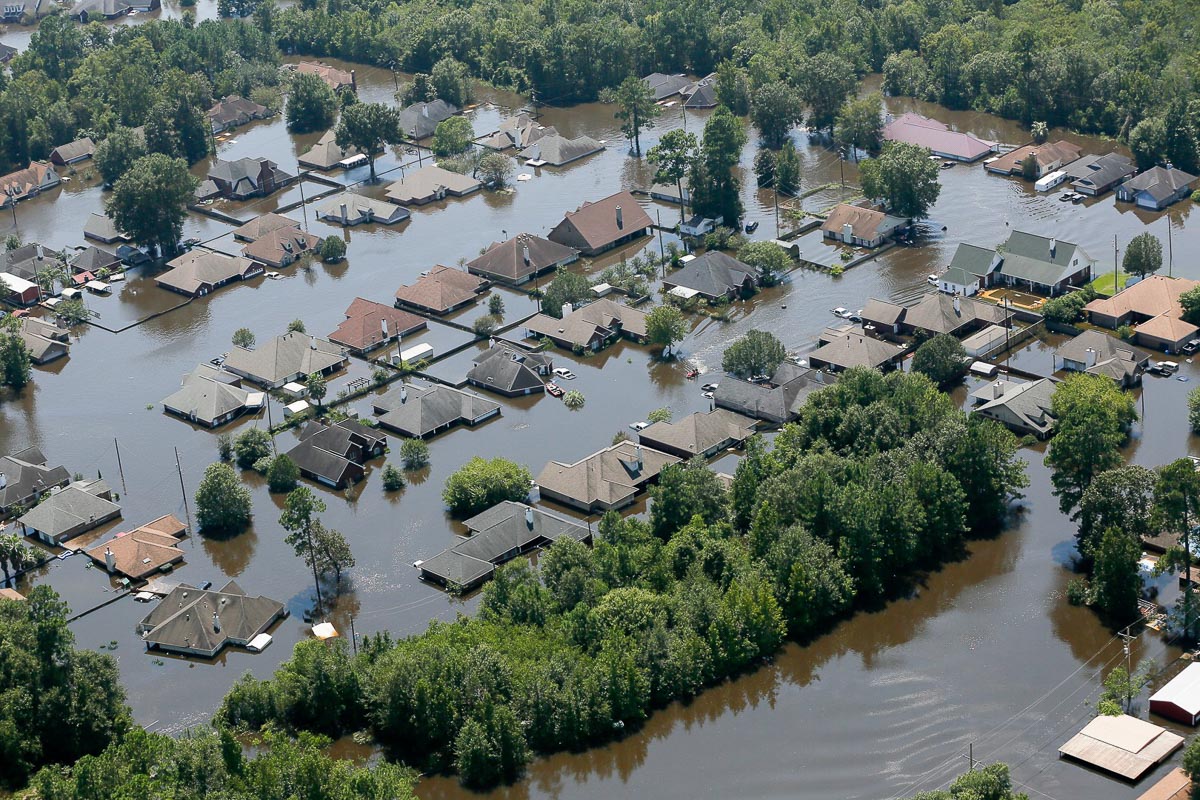Even when resilience wasn’t in her job title, Harriet Tregoning has been thinking about making cities more resilient throughout her career. Whether it was her time in the 1980s with the Environmental Protection Agency, her role as the head of Washington, D.C.’s planning department or her more recent charges with the federal housing department, Tregoning’s focus has been on building cities that can bounce back from weather-related and economic disasters better than before.
“We’re not just doing disaster recovery,” Tregoning told a crowd gathered Wednesday evening for the latest KIForum. “If you’re trying to also solve for these residency values you get a very different outcome.”
Now consulting and working on a book, Tregoning shared her lessons for Houston Wednesday.
Knowledge of risk needs to be better prioritized
As investigations into why flooded homeowners in developments near the reservoirs weren’t informed of their risks unfold, Tregoning stressed that few agencies are really taking responsibility for assessing future risks.
“I love FEMA,” she said, “I think FEMA does a very good job in very tough circumstances, but those mapped FEMA 100-year floodplains, those at this point are doing as much harm as good.”
Several efforts to better capture risk in the Houston area are underway. “An easy thing is a disclosure requirement,” she said for homebuyers or renters.
And as climate change intensifies storms, Tregoning stressed that risk will continue to evolve. “We’re used to a finite end point for our engineering decisions for our plans,” she said. “Say goodbye to that…these environments are now dynamic.”
Engineering should address multiple problems at once
“Houston has done great by its engineering chops,” said Tregoning. “The public works projects that have been built here have really served the region well in terms of floods.”
Reflecting on the National Disaster Resilience Competition hosted by HUD in 2015 after Hurricane Sandy with winners announced in 2016, Tregoning said the competition helped galvanize resiliency planning efforts that solved multiple problems at once and not just among the 13 winners.
“Even places that didn’t get any of our money are implementing the projects they proposed,” she said.
Regulation is key component to response
Regulation and engineering solutions are part of the same response, said Tregoning, comparing the two to threads of a braid.
In short: “It’s not engineering versus regulation.”
Identify vulnerabilities before the disaster as well as aspirations beyond the disaster
Recovery funding should not just help replace but rebuild better, according to Tregoning.
Using one example project, Tregoning walked through this process: “Restoring electric power, how would you do it differently to fall in line with your resiliency values,” Tregoning mused. “You might try to do something specifically to lower people’s individual energy bills..maybe you’re not just investing in the grid but you’re investing now in energy efficiency...let’s diversify the economy with renewables.”
Once cities align recovery funding and plans with larger goals and values, she said, the outcomes can shift.
Innovate, adapt and learn
Stressing the need to work across disciplines and departments, Tregoning said, “In order to innovate, we have to acknowledge that we don’t have all the answers.” And cities have to be willing to take some risks.
Tregoning mentioned the first iteration of Washington, D.C.’s bikeshare system, which was, by most estimates a failure. Today, the city is known as an innovator when it comes to bike sharing and Tregoning credited that initial failure with helping guide its evolution.
And leverage work underway or planned
Cities have a range of projects and planning efforts underway at any moment. “You could do these projects all independently and that’s what we’ve historically done,” said Tregoning. But collaborating and leveraging resources across departments can create more effective, innovative projects. Indeed, things like transportation and housing are key to resiliency generally, not just flood mitigation engineering fixes like more reservoirs or detention ponds.
Plus, she said, “it’s much cheaper” to work together.
And key to a truly resilient city is equity and an equitable recovery. Renters, for example, were hit hard by Hurricane Harvey but they are not often the targets of government assistance programs after a disaster, in part, Tregoning said because jurisdictions have records of homeowners, not renters. “A lot of people just disappear,” she said, proposing a renter registry to help connect recovery efforts and renters.
It also requires jurisdictions being smart with recovery funding. “You can do many stupid things and still be in compliance with the law,” she said. “Don’t...You have to send people a signal about what’s a smart thing to do. They’ll do dumb things if you set it up that way.”

